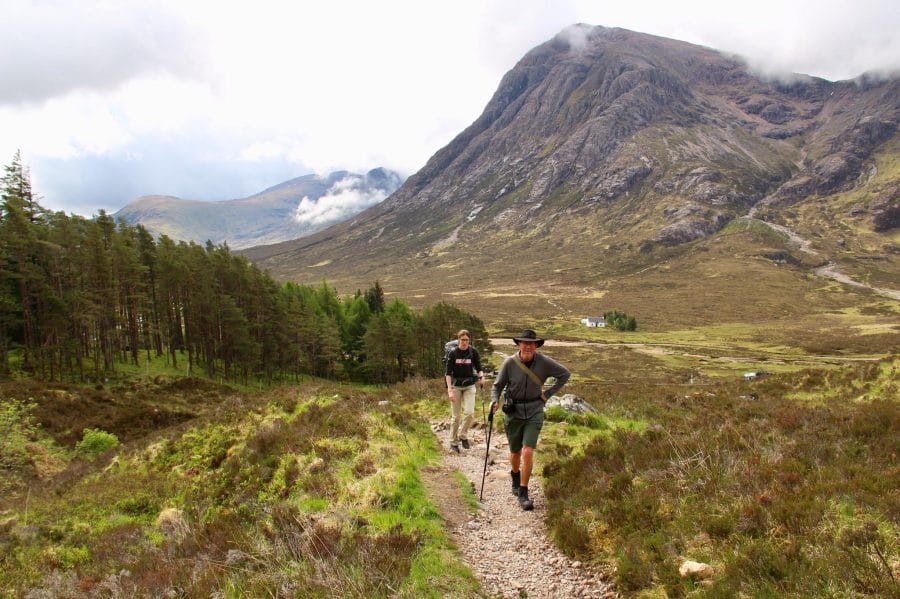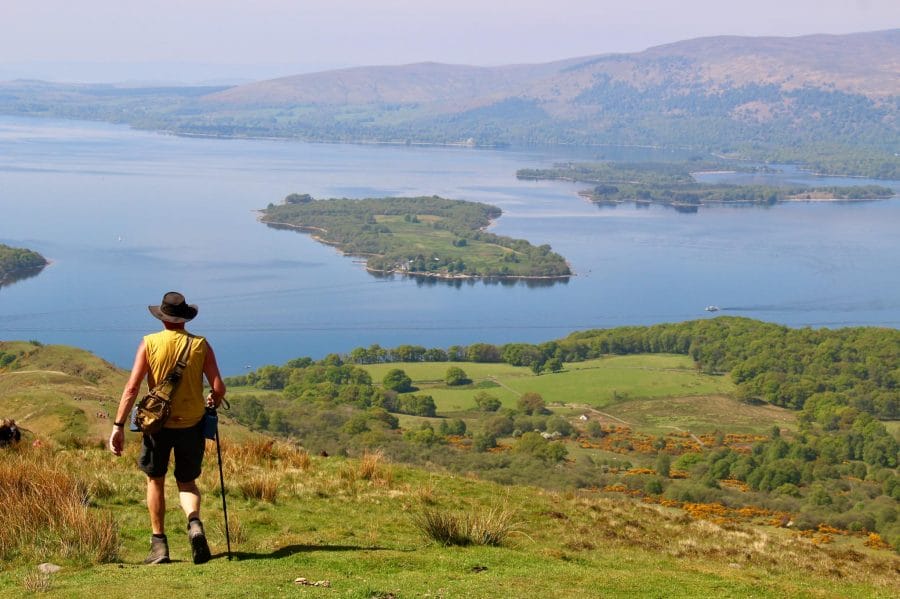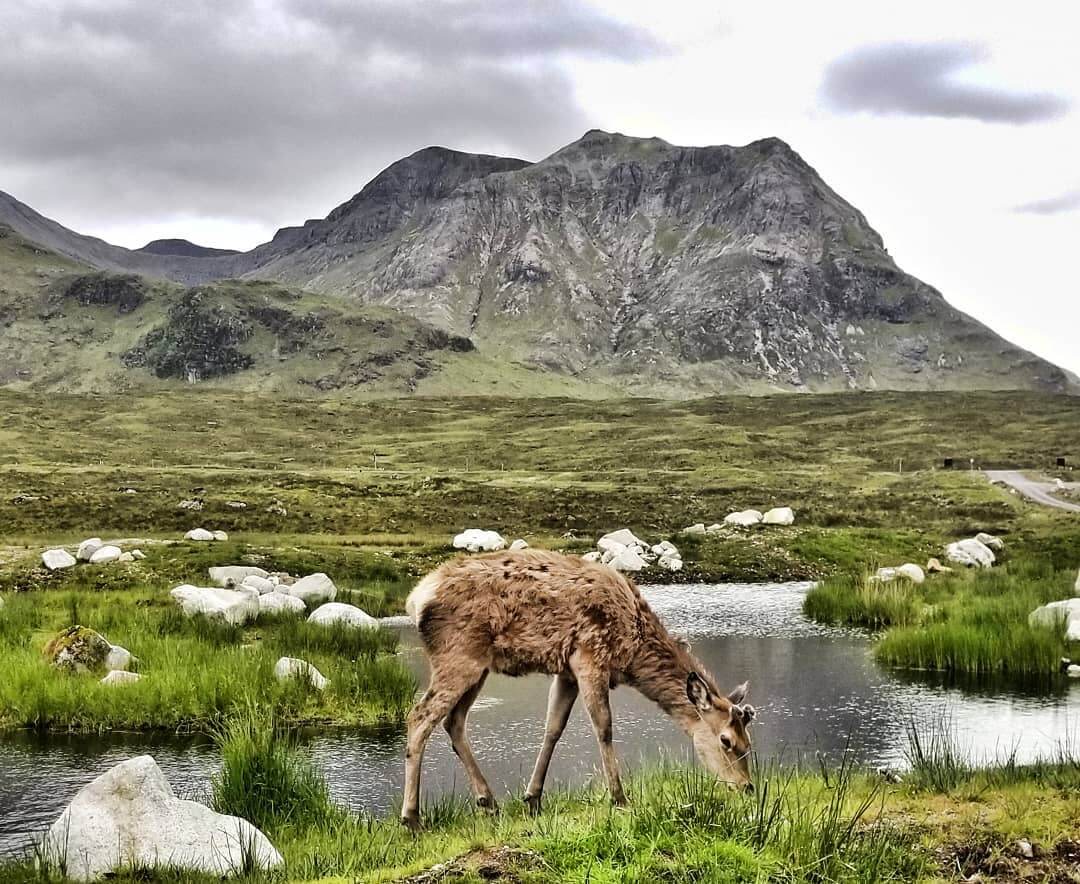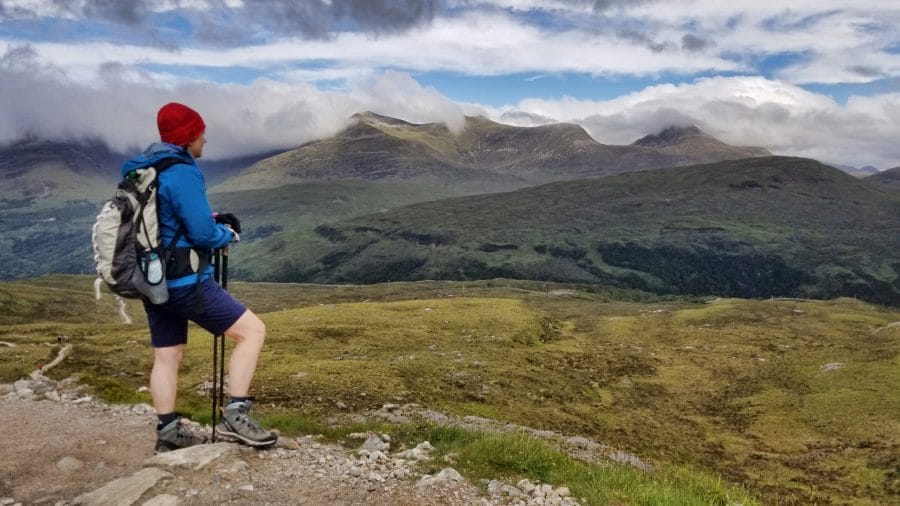The West Highland Way is one of the most famous long-distance walking trails in the world due to the spectacular scenery found along the route. It is also famous for the pesky midges that can cause quite the annoyance in the summer months if not properly prepared for. In this post, we tell you everything that you need to know about midges on the West Highland Way.

What are midges?
The highland midge, commonly referred to as a midgie in Scotland, is a species of small flying insect. They are mainly found throughout the UK and Scandinavia, often in areas of bog and marsh. Female highland midges are known for gathering in clouds and they will bite humans, cattle, sheep, and deer for blood. Male midges are non-biting.
Midges do not fair well in dry cloudless conditions and therefore, they are mainly found in humid, wet and cloudy conditions. However, they don’t have any issues with either rain or darkness. They also tend to not to go into houses or buildings, but will enter tents so campers be warned!

How bad are midge bites?
Midge and gnat bites often look similar to mosquito bites. They won’t cause you to get sick but usually cause small, red lumps that can be painful and very itchy, and can sometimes swell up.
Some people will have a stronger immune response, and will get big red lumps at the site of bites, while other people will see only a small red mark at the bite site.

Also check out our post on The West Highland Way – 8 Trail Highlights
Do some people get more midge bites than others?
Yes, it is commonly known that some people are more ‘attractive’ to midges than others.
There have been lots of theories over the years as to why this might be such as diet. However, recent studies have revealed that it is actually due to a chemical hidden in body odour called ketone. Midges don’t seem to like this chemical and it therefore works as a natural repellent.
Some people have lots more ketone than others and this is believed to be due to hereditary reasons.

How bad are the midges on the West Highland Way?
Midges can be an issue on the West Highland Way mainly in the summer months of June, July and August. Breezy days can often solve the issues as midgets do not like windy conditions. Similarly, they tend to not come out when humidity is below 60–75%. They are normally also worse near sun rise or sun set. However, it’s always best to be suitably prepared during midge season.
Midges generally start to appear during May (usually mid-late May). However, the first to emerge are normally the non-biting males. The biting females tend to arrive in early June. Midge season then generally runs until early September. There can sometimes be slight yearly variations based on the weather.

Best time to walk the West Highland Way to avoid midges?
May is the most popular month for walking the West Highland Way. This month often has the least rainfall and the most hours of sunshine. It is approaching the longest days of the year so there is daylight late into the evening leaving plenty of time for hiking. The gorse bushes also bloom in the highlands at this time of year while the small midges still slumber as larvae in the moor.
The warm, humid climate of Scotland means that the midges are particularly active in the summer months. Fortunately, Scotland is also the windiest country in Europe and with just one good gust of wind, you can get rid of the little tormentors.
Generally March, April, May, September and October are the best months during the hiking season to avoid midges. However, with the correct deterrents, you can also happily walk in the warmer summer months without any issues.

Also check out our post on Why Book The West Highland Way Early!
Midge repellents and advice
The most effective way of keeping midges away is to totally cover your skin. If they cannot reach your skin, they won’t be able to bite you. Wear long sleeves and tuck your trousers into your socks. Many also choose to wear gloves and a head net, which is a mesh hood worn over the head.
Another option is to carry a midge repellent with you such as the DEET insect repellents. A less scientifically proven but nicer smelling alternative is Avon Skin So Soft Dry Oil Spray which many find to also help combat midges.



